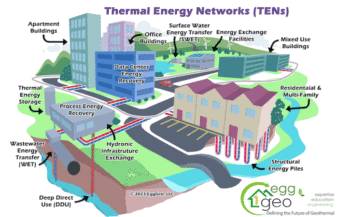
What size boiler do I need if I’m using an indirect water heater? Quite a common question, and for the vast majority of residential applications, the answer is: The same size as without an indirect. Whenever boiler sizing is in question, oversizing is never the right answer. The short cycling and reduced efficiency with oversizing are common knowledge. “Yes, but I’m using a XX gallon indirect and the I&O manual says you need 180K BTU/Hr to get the rated output.” True enough, but how do you know that’s the right size indirect and that you need the full rated output?
Not many do it but the correct procedure is do the math rather than just guessing as to the size indirect tank needed. You need to know the GPM and temp rise needed. The wild card is duration: how long do you want to maintain that GPM flow rate? This where a thorough site inspection and customer interview are vital. Two identical 1,500-sq/ft Cape Cod-type homes with identical heat losses can have wildly varying DHW loads. A full body shower and a few teenagers in one and a retired couple in the other means a huge difference in requirements. In one case, a 30-gallon is more than enough, in the other an 80-gallon may be insufficient, but without doing the math you just don’t know!
Ask the customer what they want and need, and size to that but keep in mind there are many ways to get to the same end result and all of them will be more efficient than over sizing the boiler. What ways can you deliver the required DHW without a boiler larger than the heat loss of the structure? Quite a few! Oversize the indirect for starters. Most indirect manufacturers rate their tanks at varying BTU/Hr inputs. For example, a 30-gallon tank paired with a 160K boiler may yield the same first hour rating as a 60-gallon tank and a 90K input boiler. Manufacturer’s specs are the place to start. Every water heater should have a mixing valve, correct? Absolutely! And what does maintaining the tank temp at 150 degrees vs 120 degrees do for DHW production? Going from 120 degrees to 150 degrees will increase the effective size of the tank by 25% just like that a 40-gallon tank can give the initial output of a 50-gallon tank, and help prevent Legionnaires as a bonus! If needed, multiple indirects can be used or a storage tank on a single indirect. If none of these will give the desired quantity of DHW needed, a tankless water heater or multiples are the way to go. These will provide their rated GPM output forever and not require a boiler three or four times the heat load of the home.
There is no good excuse to oversize a boiler, and I know many will think this is heresy, but you don’t have to do a full-blown heat loss calculation on every job. After you do quite a few heat loss calculations, you start to realize that similar sized and designed homes have nearly identical heat loads and that this number is usually less than the smallest boilers available. Of course, homes that don’t fit the standard ranch, cape or colonials will require a calculation. Don’t add a “fudge factor” to the inputs or the final number. The software has plenty of fudge already baked in! Oversizing is a disservice to the consumer and the hydronic industry as a whole. Homeowners depend on us to provide efficient solutions to their problems, and it is incumbent on us to do so.




Join the conversation: